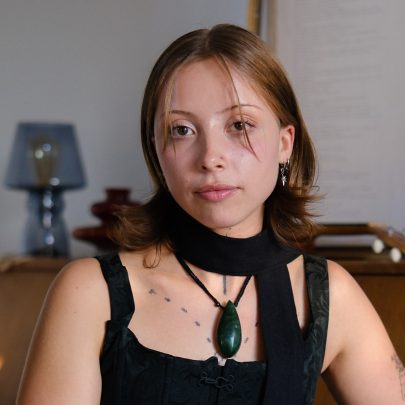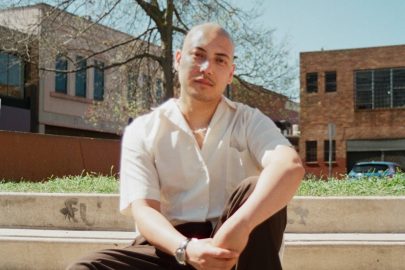Oct 16, 2013 Books
What a thrilling win for 28-year-old Eleanor Catton who took out the prestigious Man Booker Prize for her second novel The Luminaries at a ceremony in London today. As the Man Booker announcement says, “life for Eleanor Catton will never be the same again.”
Rosabel Tan spoke to Catton just before the book was released this year.
Your new novel, The Luminaries, is an astrological murder mystery set during the West Coast goldrush of the 1860s. What led you to that?
I think the West Coast and Arthurs Pass have shaped the landscape of my imagination more than any other part of New Zealand. Growing up in Christchurch, I made the trip over the pass at least a couple of times a year, usually to go tramping with my family.
When I was a teenager, my father and I cycled to the coast and back on a tandem, going west over the Lewis Pass and coming back over Arthurs in a loop. I half-dreamed a goldrush story on that trip, and it stayed in the back of my mind as a fictional possibility ever since.
The astrological dimension to the novel crept in much later: I think it might have been the word “fortune” that was the link there. In the months after The Rehearsal was published, I was reading up about 19th-century occult practices and the history of divination — not really knowing what I was looking for, just grazing and dreaming and waiting for a sign.
I came upon the idea of astral twinship: when two people are born at the same instant, under the same sky, their natal charts will be identical, and they will share a fate. I knew at once that I wanted to follow that idea.
You’ve mentioned elsewhere that you read a lot of Victorian and Edwardian literature in order to write in the 19th-century style. How do you think this style reflects the values and character of the time, and of your novel?
The readership of a Victorian novel was much, much less diverse than any contemporary readership, and that had a certain effect upon style. Most Victorian novels included French, Italian, German and occasionally Spanish idioms, for example, and these phrases were left untranslated, because it was assumed that the reader was fluent in those languages.
In The Luminaries, all the Maori and Cantonese in the book remains untranslated. I liked the idea that an antipodean version of a Victorian novel would flip that convention on its head, and also, in a way, criticise it.
A kind of smugness can characterise historical fiction, a sort of, “They should have seen it coming!” or, “People were so backwards back then.” There were a great many aspects of racism and sexism that were codified in Victorian society, and Hokitika society in particular; I had to be careful, in navigating that territory, not to be either gratuitously ugly, on the one hand, or gratuitously naive, on the other. It was hard. I didn’t want to patronise the past, but I didn’t want to whitewash it either.
The most important test of any historical fiction is plausibility, of course. I prefer “plausibility” to “realism” because it has that overtone of belief: you must write something that could be believed in, that somebody wants to believe in. It’s much more about gaining the reader’s trust than about proving the writer’s expertise.
How did you find the process of writing The Luminaries and how did it compare to your writing of The Rehearsal?
Everything was different. I wrote The Rehearsal as a master’s thesis, so I had a cohort of writers around me, a supervisor, regular workshops, a deadline. None of that was true for The Luminaries except for the deadline, which I overran by about two years.
The biggest difference, though, was that I wrote The Rehearsal never knowing that it would get picked up for publication, and with The Luminaries I knew that it would be published before I wrote the first sentence. It took me six months to write that first sentence.
How has working on this novel challenged and changed you?
The Luminaries has quite a complicated structural conceit, in that the action of the book is patterned on the actual movement of the heavens over the year 1865-66, which I simulated using computer software. Once I had the movement of the planets in place, I devised a plot that would follow and reflect that motion.
It was extraordinarily difficult to get the conceit to work, not the least because there are 20 main characters — 12 signs of the zodiac, seven astrological planets and one “terrestrial” character around whom everyone else moves — all of whom had to behave like real people and not like the parts of a machine. There were a great many dead ends and dark nights. I feel changed, absolutely.
Under what conditions do you work best?
I need solitude, and an internet connection.
Who most significantly influences your writing but is not a writer themselves?
I take a lot of cues from television drama: Six Feet Under, The Wire, The Sopranos, Deadwood, Twin Peaks, Big Love, Carnivàle, True Blood, Mad Men, Game of Thrones, Breaking Bad. The way that character and plot are developed in each episode and each season finds a lovely parallel in fiction’s divisions of chapter and act.
In that way I think television is a much better home for a novelistic mode of storytelling than a standard-length film: the changes can be subtler, and the psychological development more real.
You moved to Auckland this year to teach creative writing at the Manukau Institute of Technology. How have you found this experience?
I’m loving being back in the classroom after a couple of years living inside a book, and I feel very lucky to have joined the creative arts faculty at MIT. It’s a wonderful programme: in fact the only place in New Zealand where you can get an undergraduate degree in creative writing. The students are great.
Are you working on anything at the moment?
I have some essays that I’m playing around with, but I think that it will be a while before I can write fiction again. Finishing a book feels like a kind of harvest. It’s autumnal; you have to give yourself a kind of winter before you can plant anything new.
First published Metro, July 2013. Photographed by Jane Ussher.





